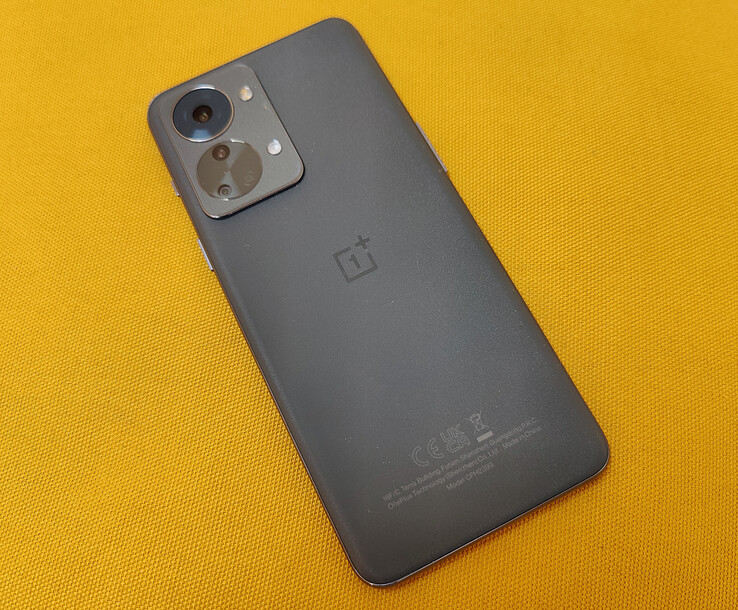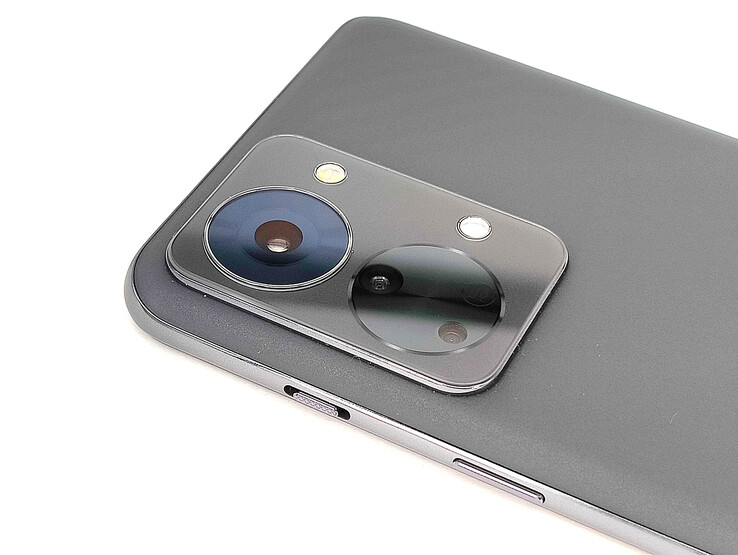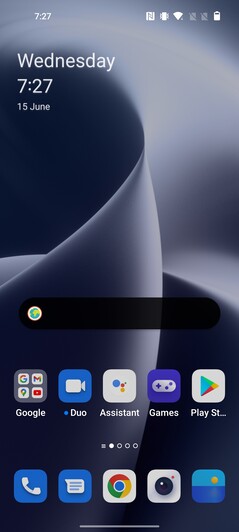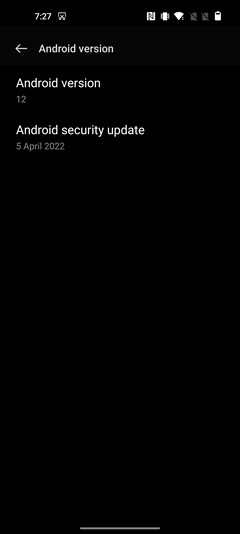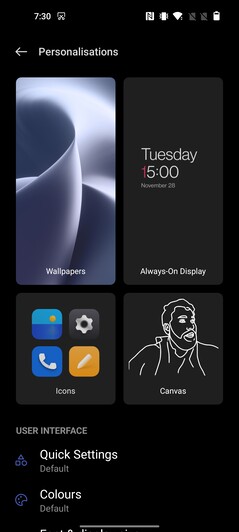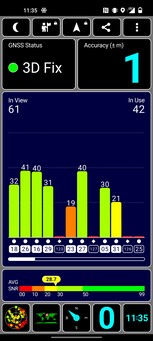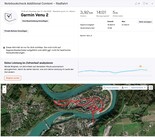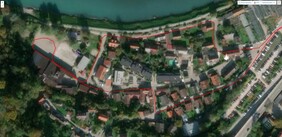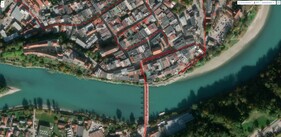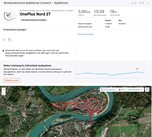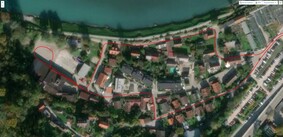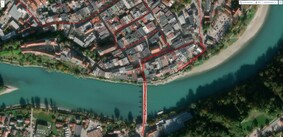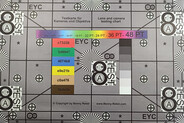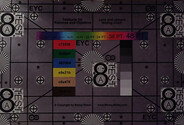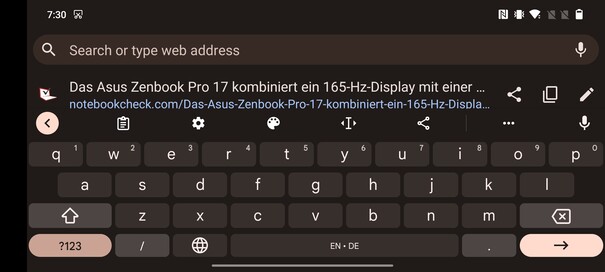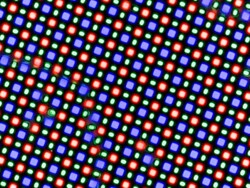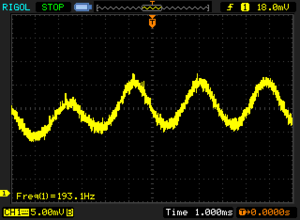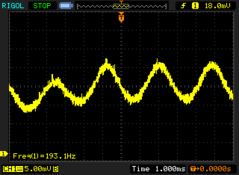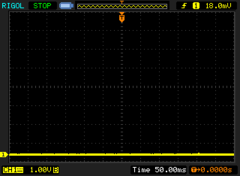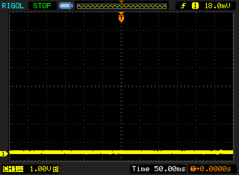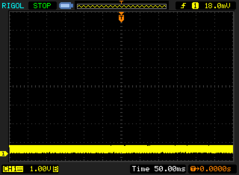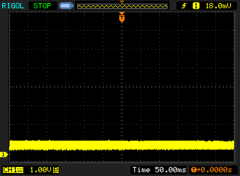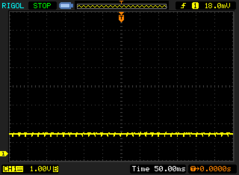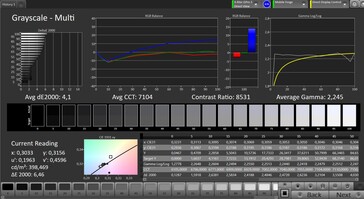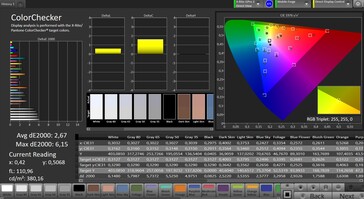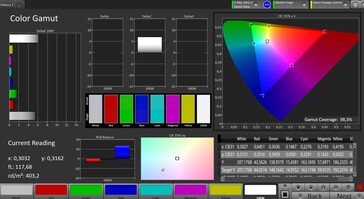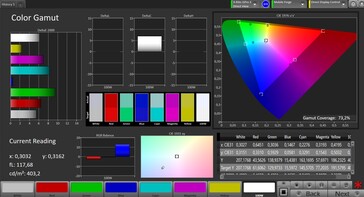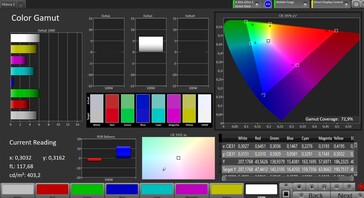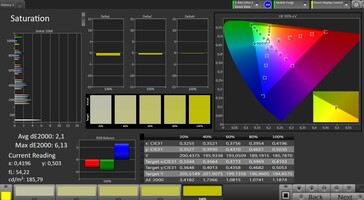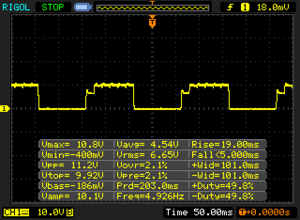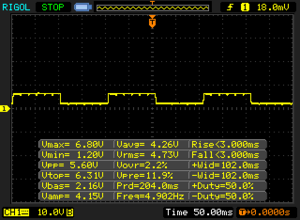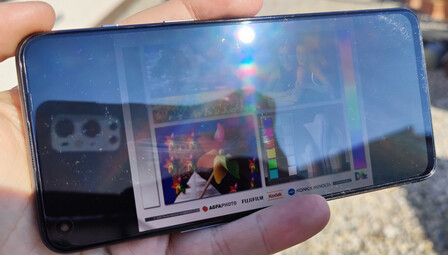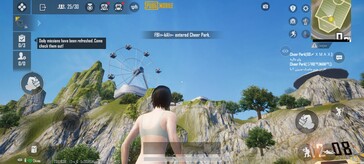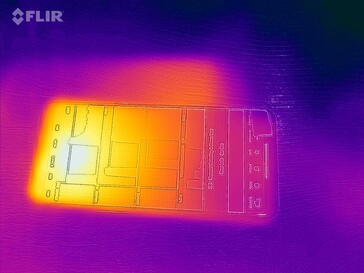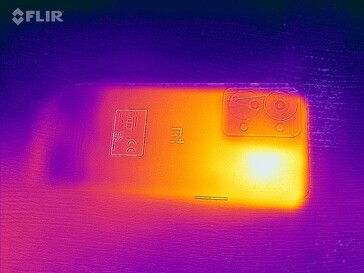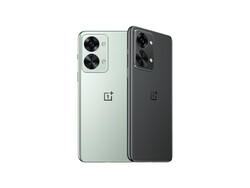OnePlus Nord 2T smartphone review: Budget high-end phone with little innovation
The OnePlus Nord series sells well, so it's not surprising that the OnePlus Nord 2 has been updated after just 9 months: The OnePlus Nord 2T hits the market with an updated design at the same price as its predecessor.
We want to discover the modifications in our review, even though they don't seem to be much at first glance. Although there's a new SoC on paper, it turns out to be an almost exact clone of the SoC in the OnePlus Nord 2 upon closer inspection. So, is the Nord 2T purely a design update?
Possible contenders in comparison
Rating | Date | Model | Weight | Drive | Size | Resolution | Price |
|---|---|---|---|---|---|---|---|
| 85.4 % v7 (old) | 06 / 2022 | OnePlus Nord 2T Dimensity 1300, Mali-G77 MP9 | 190 g | 256 GB UFS 3.1 Flash | 6.43" | 2400x1080 | |
| 85.1 % v7 (old) | 08 / 2021 | OnePlus Nord 2 5G Dimensity 1200, Mali-G77 MP9 | 189 g | 256 GB UFS 3.1 Flash | 6.43" | 2400x1080 | |
| 85.3 % v7 (old) | 02 / 2022 | Motorola Moto G200 5G SD 888+ 5G, Adreno 660 | 202 g | 128 GB UFS 3.1 Flash | 6.80" | 2460x1080 | |
| 86.6 % v7 (old) | 10 / 2021 | Xiaomi 11T Dimensity 1200, Mali-G77 MP9 | 203 g | 128 GB UFS 3.1 Flash | 6.67" | 2400x1080 | |
| 83.4 % v7 (old) | 06 / 2022 | Samsung Galaxy A53 Exynos 1280, Mali-G68 MP4 | 189 g | 128 GB UFS 2.1 Flash | 6.50" | 2400x1080 |
Case – Reminiscent of the OnePlus One
The rough back of the OnePlus Nord 2T in the gray color variant is reminiscent of early OnePlus phones, but it's not quite as grippy as in those early models. Obviously, OnePlus wants to do a bit of fan service with it. Unlike the smooth glass surface on the OnePlus Nord 2, there's also the advantage that fingerprints aren't visible, as we could determine with our test device.
The second color variant is called "Jade Fog", and it comes with a glossy surface, so it should be a bit more susceptible to fingerprints.
The OnePlus Nord 2T is a slightly more manageable phone, and it's also a bit lighter than, for example, the massive Moto G200. The chassis can be twisted to a minor extent, which is probably also due to the plastic frame that continues to be present. However, the build quality and stability are at a high level overall.
Connectivity – Same price level
The OnePlus phone is available in two storage configurations:
- 8 GB RAM / 128 GB storage: 399 Euros (~$420)
- 12 GB RAM / 256 GB storage: 499 Euros (~$525)
Storage configurations and prices have remained exactly the same compared to the predecessor.
High-end features like wireless charging or an IP certification aren't available, and there's no 3.5 mm jack for connecting headphones, or a microSD reader.
A USB-C port is located at the bottom edge, which internally only supports USB 2.0 speeds and can therefore only transfer a maximum of 480 Mb/s. Just like with the predecessor, NFC and Bluetooth 5.2 are available as wireless interfaces.
A risky situation: The microphone is located directly next to the SIM tray at the bottom. You have to be careful to choose the correct hole for the SIM tool here, otherwise you could accidentally pierce the membrane.
Software – Relatively short update policy
OxygenOS 12.1, which is based on Android 12, is preinstalled. This is the first major version of OxygenOS that's no longer completely independent; instead, it was developed based on its partner company Oppo's ColorOS.
Once again, the manufacturer has promised two new Android versions and three years of security updates. Since the security patches are already two months old at the time of testing, the update frequency is probably expected to be quarterly.
Communication and GNSS – OnePlus with Wi-Fi problem
The OnePlus smartphone can connect to mobile networks using all current standards, and it also supports 5G SA. There are also enough 4G frequencies to be able to access the mobile Internet while traveling.
During our review, we constantly checked the smartphone's mobile network reception quality. The result: The OnePlus Nord 2T is on par with many high-end smartphones here, and it shows very good signal quality.
Wi-Fi 6 is also available, and the smartphone is on par with its comparison devices when it comes to sending data, but it's much slower when it comes to receiving data. This could simply be a software problem that can be solved via an update. The data rates are very stable during the test.
| Networking | |
| iperf3 receive AXE11000 | |
| Average of class Smartphone (52 - 1721, n=179, last 2 years) | |
| OnePlus Nord 2T | |
| Samsung Galaxy A53 | |
| iperf3 transmit AXE11000 | |
| OnePlus Nord 2T | |
| Average of class Smartphone (49.8 - 1828, n=179, last 2 years) | |
| Samsung Galaxy A53 | |
| iperf3 transmit AX12 | |
| OnePlus Nord 2 5G | |
| Xiaomi 11T | |
| Motorola Moto G200 5G | |
| iperf3 receive AX12 | |
| OnePlus Nord 2 5G | |
| Xiaomi 11T | |
| Motorola Moto G200 5G | |
Outdoors, our location is pinpointed with an accuracy of one meter after a minimal delay, which is a very good result. Numerous satellites are also available for positioning, and the SBAS system for higher accuracy is also on board.
So as to be able to make an even more in-depth assessment of the positioning accuracy in everyday use, we got on our bike and took the OnePlus Nord 2T as well as the Garmin Venu 2 smartwatch along for a comparison.
We can conclude that the Nord phone occasionally shows small inaccuracies, especially in narrow old-town alleys, but the comparison device doesn't navigate very well here, either. However, the positioning accuracy is very good in areas where houses aren't that close to each other; therefore, we can recommend the OnePlus Nord 2T as a navigation device.
Telephone and call quality – Moderate call quality
OnePlus uses Google's standard phone app. It has all the necessary functions. Of course, you can also use other apps from the Play Store if you want, but you should look for a reliable software developer in that case.
The internal earpiece tends to drone at maximum volume, and it generally reproduces voices in a slightly muffled way. The microphone doesn't pick up our voice that clearly, either, as the person on the other end of the line confirms. They sound a bit better over the speaker, but we have to be careful not to speak too quietly, or the hands-free microphone doesn't pick up our voice anymore.
Cameras – Better in the dark
Compared to the predecessor, little has changed as far as the camera is concerned: There's still no macro lens, and the main camera with optical image stabilization still has a resolution of 50 megapixels. However, the aperture and therefore the light sensitivity are slightly higher.
Consequently, the main camera also does a good job brightening our comparison pictures, but it also creates a very bright sky in HDR mode; in addition, sharpness is rather mediocre upon closer inspection. In low light, however, the brightening is actually better than in the predecessor, and the level of detail is better here as well. That said, the camera doesn't perform at a high-end level.
Once again, the wide-angle lens takes decent snapshots, but by now, there are mobile phone cameras that provide a much better reproduction of image details.
Video recording remains available at 4K and 30 fps. You have to decide before recording if you want to use the wide-angle lens or the main camera; it's not possible to switch while recording. Although the autofocus occasionally responds with minimal delays, it works well overall, as does the brightness correction; this results in decent pictures.
The 32-megapixel front-facing camera does its job quite well, and it also provides decent detail reproduction in the hair area. This allows you to magnify selfies a bit if you want to.
Image comparison
Choose a scene and navigate within the first image. One click changes the position on touchscreens. One click on the zoomed-in image opens the original in a new window. The first image shows the scaled photograph of the test device.
Main camera - FlowerMain camera - SurroundingsMain camera - Low lightWide-angle camera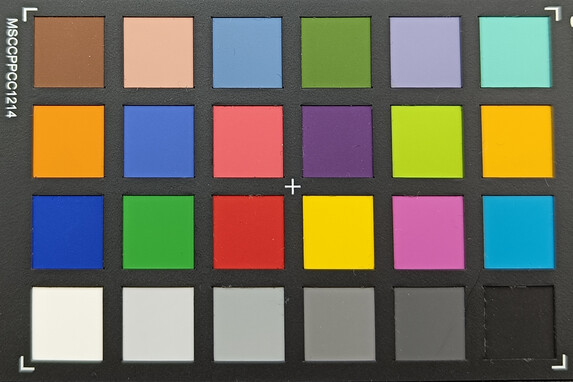
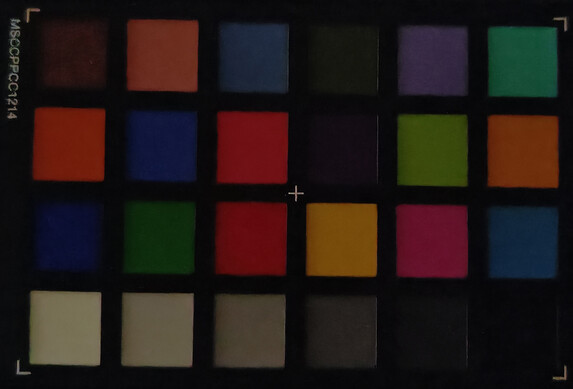
Accessories and warranty – Charger included
In contrast to the current trend, a charger is still included in the box of the OnePlus Nord 2T. In addition, you also get a case, a USB-C cable, and a SIM tool.
Once again, OnePlus' store offers a special Sandstone case and a screen protector for the Nord phone, both of which cost 23 Euros (~$24). There's also a special accessories package that includes TWS headphones and costs just under 67 Euros (~$71). A compatible replacement charger is currently unavailable from OnePlus.
The manufacturer offers a 24-month warranty for its smartphones.
Input devices and handling – 90 Hz touchscreen
The touchscreen can be used smoothly and without any issues. The display, which can be set to a refresh rate of 60 or 90 Hz, also contributes to this. It feels like you can navigate menu screens even more intuitively at 90 Hz.
The fingerprint sensor is hidden underneath the screen, and it's located quite far down. When you hold the phone in your hand, you often have to reposition it to reach the sensor. The recognition accuracy is good, and the smartphone is unlocked with a very short delay. It's annoying, however, that the fingerprint sensor isn't active all the time, and it doesn't respond when the display is completely turned off, for example.
Face recognition is also integrated, and it works well, but it's not quite as secure due to the 2D implementation that lacks hardware support.
Display – No DC dimming
When it comes to the display panel, nothing seems to have changed. The size, resolution, brightness, and measurements: The same or very similar values can be seen everywhere in the OnePlus Nord 2 and 2T. Once again, this is an AMOLED display with an expanded 1080p resolution.
The average display brightness is around 573 cd/m². We also observe PWM flickering in this device, something that is typical for OLED displays. Unlike older OnePlus phones, there's no DC dimming option here.
| |||||||||||||||||||||||||
Brightness Distribution: 96 %
Center on Battery: 561 cd/m²
Contrast: ∞:1 (Black: 0 cd/m²)
ΔE ColorChecker Calman: 2.67 | ∀{0.5-29.43 Ø4.77}
ΔE Greyscale Calman: 4.1 | ∀{0.09-98 Ø5}
98.3% sRGB (Calman 2D)
Gamma: 2.245
CCT: 7104 K
| OnePlus Nord 2T AMOLED, 2400x1080, 6.4" | OnePlus Nord 2 5G AMOLED, 2400x1080, 6.4" | Motorola Moto G200 5G IPS LCD, 2460x1080, 6.8" | Xiaomi 11T AMOLED, 2400x1080, 6.7" | Samsung Galaxy A53 AMOLED, 2400x1080, 6.5" | |
|---|---|---|---|---|---|
| Screen | 2% | -8% | 33% | 29% | |
| Brightness middle (cd/m²) | 561 | 594 6% | 512 -9% | 781 39% | 718 28% |
| Brightness (cd/m²) | 573 | 594 4% | 488 -15% | 782 36% | 730 27% |
| Brightness Distribution (%) | 96 | 99 3% | 87 -9% | 94 -2% | 92 -4% |
| Black Level * (cd/m²) | 0.36 | ||||
| Colorchecker dE 2000 * | 2.67 | 2.74 -3% | 3.42 -28% | 2 25% | 1.62 39% |
| Colorchecker dE 2000 max. * | 6.15 | 6 2% | 5.9 4% | 2.9 53% | 4.21 32% |
| Greyscale dE 2000 * | 4.1 | 4.2 -2% | 3.7 10% | 2.3 44% | 2 51% |
| Gamma | 2.245 98% | 2.278 97% | 7154 0% | 2.28 96% | 2.156 102% |
| CCT | 7104 91% | 7322 89% | 1.944 334362% | 6852 95% | 6545 99% |
| Contrast (:1) | 1422 |
* ... smaller is better
Screen Flickering / PWM (Pulse-Width Modulation)
| Screen flickering / PWM detected | 193.1 Hz | ||
The display backlight flickers at 193.1 Hz (worst case, e.g., utilizing PWM) . The frequency of 193.1 Hz is relatively low, so sensitive users will likely notice flickering and experience eyestrain at the stated brightness setting and below. In comparison: 53 % of all tested devices do not use PWM to dim the display. If PWM was detected, an average of 8083 (minimum: 5 - maximum: 343500) Hz was measured. | |||
Series of measurements with fixed zoom level and different brightness settings
We take a closer look at the color reproduction's accuracy in our tests with the spectrophotometer and the CalMAN software.
We notice a very slight blue tint in the grayscale, but this is also the only relevant deviation. Although there are generally more accurate displays on the mobile phone market, the color nuances are sufficiently accurate for the human eye on this panel.
Display Response Times
| ↔ Response Time Black to White | ||
|---|---|---|
| 24 ms ... rise ↗ and fall ↘ combined | ↗ 19 ms rise | |
| ↘ 5 ms fall | ||
| The screen shows good response rates in our tests, but may be too slow for competitive gamers. In comparison, all tested devices range from 0.1 (minimum) to 240 (maximum) ms. » 53 % of all devices are better. This means that the measured response time is worse than the average of all tested devices (20.2 ms). | ||
| ↔ Response Time 50% Grey to 80% Grey | ||
| 6 ms ... rise ↗ and fall ↘ combined | ↗ 3 ms rise | |
| ↘ 3 ms fall | ||
| The screen shows very fast response rates in our tests and should be very well suited for fast-paced gaming. In comparison, all tested devices range from 0.165 (minimum) to 636 (maximum) ms. » 17 % of all devices are better. This means that the measured response time is better than the average of all tested devices (31.6 ms). | ||
The smartphone can also be used outdoors on bright days. Nevertheless, you will notice the difference to Samsung's or Xiaomi's OLED panels, for example, which can generate much more brightness with their Boost mode, making them even more flexible during use. With the OnePlus Nord 2T, you have to move into the shade more often.
The viewing angles are almost perfect. When nothing is being reflected on the display, it's possible to see the screen content very well even from very flat angles.
Performance – SoC with strange results
At first glance, you could think that the OnePlus Nord 2T comes with a completely new SoC: However, the MediaTek Dimensity 1300 matches the Dimensity 1200 exactly in almost all areas, with the latter having been installed in the OnePlus Nord 2. Therefore, you shouldn't expect a performance leap, and those looking for the fastest smartphone processor in this price range will still be better served with the Motorola Moto G200.
The Dimensity 1300 delivers solid performance for everyday use, even when multitasking. Some benchmarks show lower results than expected, though. It's currently hard to tell whether this is due to OnePlus' software, the benchmarks, or the SoC, since the OnePlus Nord 2T is the first device that we review with this SoC.
| AImark - Score v2.x | |
| Motorola Moto G200 5G | |
| Xiaomi 11T | |
| OnePlus Nord 2 5G | |
| OnePlus Nord 2T | |
| Average MediaTek Dimensity 1300 (n=1) | |
| Samsung Galaxy A53 | |
In terms of graphics performance, the Nord 2T performs much better with its Mali-G77 MP9, and it even frequently reaches first place in the offscreen tests in particular.
| 3DMark | |
| Wild Life Extreme Unlimited | |
| Motorola Moto G200 5G | |
| OnePlus Nord 2T | |
| OnePlus Nord 2 5G | |
| Xiaomi 11T | |
| Samsung Galaxy A53 | |
| Wild Life Extreme | |
| Motorola Moto G200 5G | |
| OnePlus Nord 2T | |
| Xiaomi 11T | |
| OnePlus Nord 2 5G | |
| Samsung Galaxy A53 | |
| Wild Life Unlimited Score | |
| Motorola Moto G200 5G | |
| OnePlus Nord 2T | |
| OnePlus Nord 2 5G | |
| Xiaomi 11T | |
| Samsung Galaxy A53 | |
| Wild Life Score | |
| Motorola Moto G200 5G | |
| OnePlus Nord 2T | |
| OnePlus Nord 2 5G | |
| Xiaomi 11T | |
| Samsung Galaxy A53 | |
| GFXBench (DX / GLBenchmark) 2.7 | |
| T-Rex Onscreen | |
| Motorola Moto G200 5G | |
| Xiaomi 11T | |
| Samsung Galaxy A53 | |
| OnePlus Nord 2T | |
| OnePlus Nord 2 5G | |
| 1920x1080 T-Rex Offscreen | |
| OnePlus Nord 2T | |
| Xiaomi 11T | |
| OnePlus Nord 2 5G | |
| Motorola Moto G200 5G | |
| Samsung Galaxy A53 | |
| GFXBench 3.0 | |
| on screen Manhattan Onscreen OGL | |
| Xiaomi 11T | |
| Motorola Moto G200 5G | |
| OnePlus Nord 2 5G | |
| OnePlus Nord 2T | |
| Samsung Galaxy A53 | |
| 1920x1080 1080p Manhattan Offscreen | |
| OnePlus Nord 2T | |
| OnePlus Nord 2 5G | |
| Xiaomi 11T | |
| Motorola Moto G200 5G | |
| Samsung Galaxy A53 | |
| GFXBench 3.1 | |
| on screen Manhattan ES 3.1 Onscreen | |
| Xiaomi 11T | |
| OnePlus Nord 2 5G | |
| Motorola Moto G200 5G | |
| OnePlus Nord 2T | |
| Samsung Galaxy A53 | |
| 1920x1080 Manhattan ES 3.1 Offscreen | |
| Xiaomi 11T | |
| OnePlus Nord 2T | |
| OnePlus Nord 2 5G | |
| Motorola Moto G200 5G | |
| Samsung Galaxy A53 | |
| GFXBench | |
| on screen Car Chase Onscreen | |
| Xiaomi 11T | |
| OnePlus Nord 2 5G | |
| OnePlus Nord 2T | |
| Motorola Moto G200 5G | |
| Samsung Galaxy A53 | |
| 1920x1080 Car Chase Offscreen | |
| OnePlus Nord 2T | |
| OnePlus Nord 2 5G | |
| Xiaomi 11T | |
| Motorola Moto G200 5G | |
| Samsung Galaxy A53 | |
| on screen Aztec Ruins High Tier Onscreen | |
| Xiaomi 11T | |
| Motorola Moto G200 5G | |
| OnePlus Nord 2 5G | |
| OnePlus Nord 2T | |
| Samsung Galaxy A53 | |
| 2560x1440 Aztec Ruins High Tier Offscreen | |
| OnePlus Nord 2 5G | |
| Xiaomi 11T | |
| Motorola Moto G200 5G | |
| Samsung Galaxy A53 | |
| OnePlus Nord 2T | |
| on screen Aztec Ruins Normal Tier Onscreen | |
| Xiaomi 11T | |
| OnePlus Nord 2 5G | |
| OnePlus Nord 2T | |
| Motorola Moto G200 5G | |
| Samsung Galaxy A53 | |
| 1920x1080 Aztec Ruins Normal Tier Offscreen | |
| OnePlus Nord 2T | |
| OnePlus Nord 2 5G | |
| Xiaomi 11T | |
| Motorola Moto G200 5G | |
| Samsung Galaxy A53 | |
Our review unit is also very fast when browsing the Internet. In practice, this means that websites load quickly and that images are often already available while scrolling.
| Jetstream 2 - 2.0 Total Score | |
| Average of class Smartphone (23.8 - 387, n=148, last 2 years) | |
| Motorola Moto G200 5G (Chrome97) | |
| Average MediaTek Dimensity 1300 (n=1) | |
| OnePlus Nord 2T (Chrome 102) | |
| Samsung Galaxy A53 (Chrome 101) | |
| Xiaomi 11T (Chrome 94.0.4606.85) | |
| OnePlus Nord 2 5G (Chrome 92) | |
| Speedometer 2.0 - Result 2.0 | |
| Average of class Smartphone (15.2 - 643, n=120, last 2 years) | |
| Motorola Moto G200 5G (Chrome97) | |
| OnePlus Nord 2T (Chome 102) | |
| Average MediaTek Dimensity 1300 (n=1) | |
| Xiaomi 11T (Chrome 94.0.4606.85) | |
| Samsung Galaxy A53 (Chome 101) | |
| OnePlus Nord 2 5G (Chome 92) | |
| WebXPRT 3 - Overall | |
| Average of class Smartphone (38 - 380, n=30, last 2 years) | |
| Motorola Moto G200 5G (Chrome97) | |
| Xiaomi 11T (Chrome 94.0.4606.85) | |
| OnePlus Nord 2 5G (Chrome 92) | |
| Samsung Galaxy A53 (Chrome 101) | |
| OnePlus Nord 2T (Chrome 102) | |
| Average MediaTek Dimensity 1300 (n=1) | |
| Octane V2 - Total Score | |
| Average of class Smartphone (2228 - 126661, n=195, last 2 years) | |
| OnePlus Nord 2T (Chrome 102) | |
| Average MediaTek Dimensity 1300 (n=1) | |
| Xiaomi 11T (Chrome 94.0.4606.85) | |
| Motorola Moto G200 5G (Chrome97) | |
| OnePlus Nord 2 5G (Chrome 92) | |
| Samsung Galaxy A53 (Chrome 101) | |
| Mozilla Kraken 1.1 - Total | |
| Samsung Galaxy A53 (Chrome 101) | |
| OnePlus Nord 2 5G (Chrome 92) | |
| Xiaomi 11T (Chrome 94.0.4606.85) | |
| OnePlus Nord 2T (Chrome 102) | |
| Average MediaTek Dimensity 1300 (n=1) | |
| Motorola Moto G200 5G (Chrome97) | |
| Average of class Smartphone (257 - 28190, n=155, last 2 years) | |
* ... smaller is better
The UFS 3.1 storage is very fast, as it was in the predecessor. This also gives the OnePlus phone a significant speed advantage over some competitors. Loading times are short, and data transfers aren't slowed down, at least not by the storage solution. This makes it all the more unfortunate that the OnePlus Nord 2T only offers a USB 2.0 port, which becomes a bottleneck when exchanging data with other devices.
| OnePlus Nord 2T | OnePlus Nord 2 5G | Motorola Moto G200 5G | Xiaomi 11T | Samsung Galaxy A53 | Average 256 GB UFS 3.1 Flash | Average of class Smartphone | |
|---|---|---|---|---|---|---|---|
| AndroBench 3-5 | -5% | -14% | -31% | -40% | 7% | 31% | |
| Sequential Read 256KB (MB/s) | 1891.3 | 1827 -3% | 1898 0% | 1790 -5% | 510.1 -73% | 1757 ? -7% | 2248 ? 19% |
| Sequential Write 256KB (MB/s) | 1300.6 | 1256 -3% | 712 -45% | 942 -28% | 486.7 -63% | 1204 ? -7% | 1887 ? 45% |
| Random Read 4KB (MB/s) | 235.8 | 223.7 -5% | 155.9 -34% | 139.3 -41% | 229.9 -3% | 287 ? 22% | 299 ? 27% |
| Random Write 4KB (MB/s) | 262.2 | 239 -9% | 322.5 23% | 133.3 -49% | 210.8 -20% | 318 ? 21% | 346 ? 32% |
Games – Gaming at a maximum of 60 fps
The OnePlus Nord 2T isn't explicitly advertised as a gaming phone, but its 90 Hz screen could at least enable HFR gaming to some degree. This didn't work in the games that we tested, though. We achieved a maximum of around 60 fps in Armajet as well as in the more demanding 3D shooter PUBG Mobile. We determined the fps rates with GameBench's tools.
If you have higher demands and set the graphics settings in PUBG Mobile to HD, you can only achieve around 40 fps. This is still acceptable, and most mobile games can be played on the smartphone without any issues. However, the impression remains that better results could have been achieved here.
Emissions – Runs hot
Temperature
The OnePlus smartphone can get pretty warm under prolonged load, which also has an impact on performance: It fluctuates heavily after several runs of a benchmark; it can return to the maximum values from time to time, but it then drops significantly again.
(-) The maximum temperature on the upper side is 45.7 °C / 114 F, compared to the average of 35.2 °C / 95 F, ranging from 21.9 to 247 °C for the class Smartphone.
(±) The bottom heats up to a maximum of 44.3 °C / 112 F, compared to the average of 34 °C / 93 F
(+) In idle usage, the average temperature for the upper side is 25 °C / 77 F, compared to the device average of 32.9 °C / 91 F.
3DMark Wild Life Stress Test
| 3DMark | |
| Wild Life Stress Test Stability | |
| Samsung Galaxy A53 | |
| Xiaomi 11T | |
| Motorola Moto G200 5G | |
| OnePlus Nord 2 5G | |
| OnePlus Nord 2T | |
| Wild Life Extreme Stress Test | |
| Samsung Galaxy A53 | |
| Xiaomi 11T | |
| Motorola Moto G200 5G | |
| OnePlus Nord 2 5G | |
| OnePlus Nord 2T | |
Speakers
The sound of the OnePlus Nord 2T is at an average level: The speakers can get quite loud if desired, but it would be nice if they offered a bit more low mids. As a result, the sound isn't distorted, but it's a bit high-pitched, which makes it seem thinner than with higher-quality speakers. The earpiece is used as a second speaker to create a stereo effect.
Speakers or headphones can be connected either via the USB-C port or Bluetooth 5.2. This works smoothly in both cases, and headphones with a 3.5 mm plug can also be used with an adapter. All of the currently important Bluetooth audio codecs, such as aptX Adaptive and LHDC, are supported (apart from Samsung's proprietary codec).
OnePlus Nord 2T audio analysis
(+) | speakers can play relatively loud (87.4 dB)
Bass 100 - 315 Hz
(-) | nearly no bass - on average 30.1% lower than median
(±) | linearity of bass is average (14.4% delta to prev. frequency)
Mids 400 - 2000 Hz
(±) | higher mids - on average 6.6% higher than median
(+) | mids are linear (5.7% delta to prev. frequency)
Highs 2 - 16 kHz
(±) | higher highs - on average 6.8% higher than median
(+) | highs are linear (4.8% delta to prev. frequency)
Overall 100 - 16.000 Hz
(±) | linearity of overall sound is average (23.6% difference to median)
Compared to same class
» 53% of all tested devices in this class were better, 8% similar, 39% worse
» The best had a delta of 11%, average was 35%, worst was 134%
Compared to all devices tested
» 70% of all tested devices were better, 6% similar, 24% worse
» The best had a delta of 4%, average was 24%, worst was 134%
Samsung Galaxy A53 audio analysis
(+) | speakers can play relatively loud (86.1 dB)
Bass 100 - 315 Hz
(-) | nearly no bass - on average 25.7% lower than median
(±) | linearity of bass is average (11.2% delta to prev. frequency)
Mids 400 - 2000 Hz
(±) | higher mids - on average 8.4% higher than median
(±) | linearity of mids is average (7.1% delta to prev. frequency)
Highs 2 - 16 kHz
(±) | higher highs - on average 5.3% higher than median
(+) | highs are linear (6.7% delta to prev. frequency)
Overall 100 - 16.000 Hz
(±) | linearity of overall sound is average (24.1% difference to median)
Compared to same class
» 56% of all tested devices in this class were better, 8% similar, 37% worse
» The best had a delta of 11%, average was 35%, worst was 134%
Compared to all devices tested
» 72% of all tested devices were better, 6% similar, 22% worse
» The best had a delta of 4%, average was 24%, worst was 134%
Battery life – Charges a bit faster
Energy consumption
In terms of energy consumption, the OnePlus Nord 2T is roughly on par with the comparison devices, and it even requires slightly less energy under full load.
A new feature for the Nord 2T is the charging technology: SuperVOOC from the sister company Oppo is used, and it can charge the battery at a maximum of 80 watts. This is 15 watts more than in the predecessor, but in practice, it doesn't make that much of a difference in charging times: The smartphone takes just under 35 minutes to be fully charged again, and you can get enough battery life for a few hours of use in just a few minutes.
| Idle | |
| Load |
|
Key:
min: | |
| OnePlus Nord 2T 4500 mAh | OnePlus Nord 2 5G 4500 mAh | Motorola Moto G200 5G 5000 mAh | Xiaomi 11T 5000 mAh | Samsung Galaxy A53 5000 mAh | Average MediaTek Dimensity 1300 | Average of class Smartphone | |
|---|---|---|---|---|---|---|---|
| Power Consumption | -16% | -5% | -14% | -9% | 0% | -28% | |
| Idle Minimum * (Watt) | 0.9 | 0.8 11% | 0.6 33% | 0.78 13% | 0.9 -0% | 0.9 ? -0% | 0.847 ? 6% |
| Idle Average * (Watt) | 1.3 | 1.2 8% | 0.9 31% | 1.86 -43% | 1.3 -0% | 1.3 ? -0% | 1.446 ? -11% |
| Idle Maximum * (Watt) | 1.7 | 1.6 6% | 1.5 12% | 1.88 -11% | 1.6 6% | 1.7 ? -0% | 1.63 ? 4% |
| Load Average * (Watt) | 4 | 5.7 -43% | 7 -75% | 3.98 -0% | 5.7 -43% | 4 ? -0% | 6.95 ? -74% |
| Load Maximum * (Watt) | 6.8 | 10.9 -60% | 8.4 -24% | 8.78 -29% | 7.3 -7% | 6.8 ? -0% | 11.3 ? -66% |
* ... smaller is better
Energy consumption: Geekbench (150 cd/m²)
Energy consumption: GFXBench (150 cd/m²)
Battery life
Although the battery of 4,500 mAh is just as large as in the Nord 2, you have to manage with less capacity compared to other smartphones on the market.
This isn't evident in the Wi-Fi test: The phone achieves a very good runtime of 15:49 hours here, which is on par with the predecessor and even slightly above the comparison devices. In the idle scenarios and while watching movies, though, it becomes noticeable that other smartphones have even more resources in this regard.
Nevertheless, the OnePlus Nord 2T can easily survive two workdays with normal use without charging.
Pros
Cons
Verdict – Barely any real updates
The OnePlus Nord 2T provides some updates compared to its predecessor, but they are rather marginal upon closer inspection: The main camera takes better photos in low light, OnePlus decided on a new design, and the new SoC brings some detail improvements, but it's very similar to the OnePlus Nord 2's centerpiece.
This results in a smartphone that hardly offers any incentive for owners of the predecessor to update. At the same time, it's still a budget phone with good performance, fast storage, long battery life, and a slightly more manageable format.
The strong heat development is also a problem with this phone, as well as the strange performance drops that we observe in benchmarks. However, the smartphone runs smoothly in everyday use, and OnePlus might still be able to correct this with an update. The slightly slower Wi-Fi in some scenarios, and the short update policy in relation to the rest of the market are also annoying.
The OnePlus Nord 2T is only a minor update compared with the predecessor. The SoC still seems to have slight issues with Wi-Fi and performance stability.
So the less expensive predecessor, the OnePlus Nord 2 with its established SoC, might even be the better choice at the moment. The Samsung Galaxy A53 is also a bit more compact, but you'll have to put up with significant performance losses for a similar price.
Price and availability
OnePlus Nord 2T
- 08/30/2022 v7 (old)
Florian Schmitt


